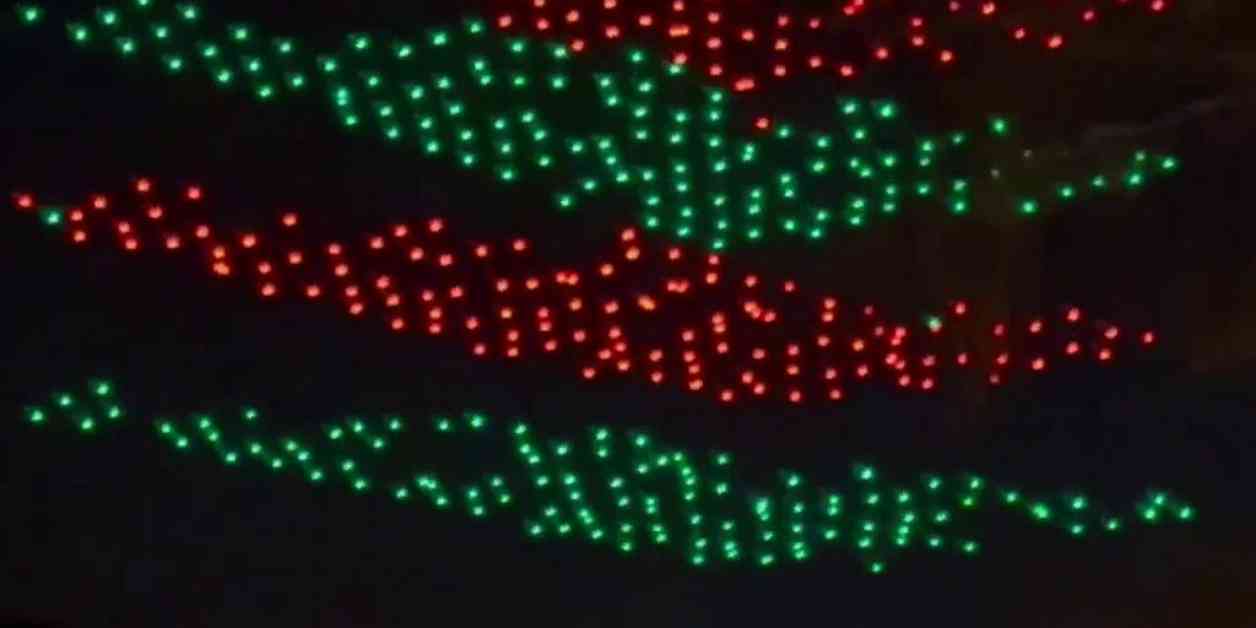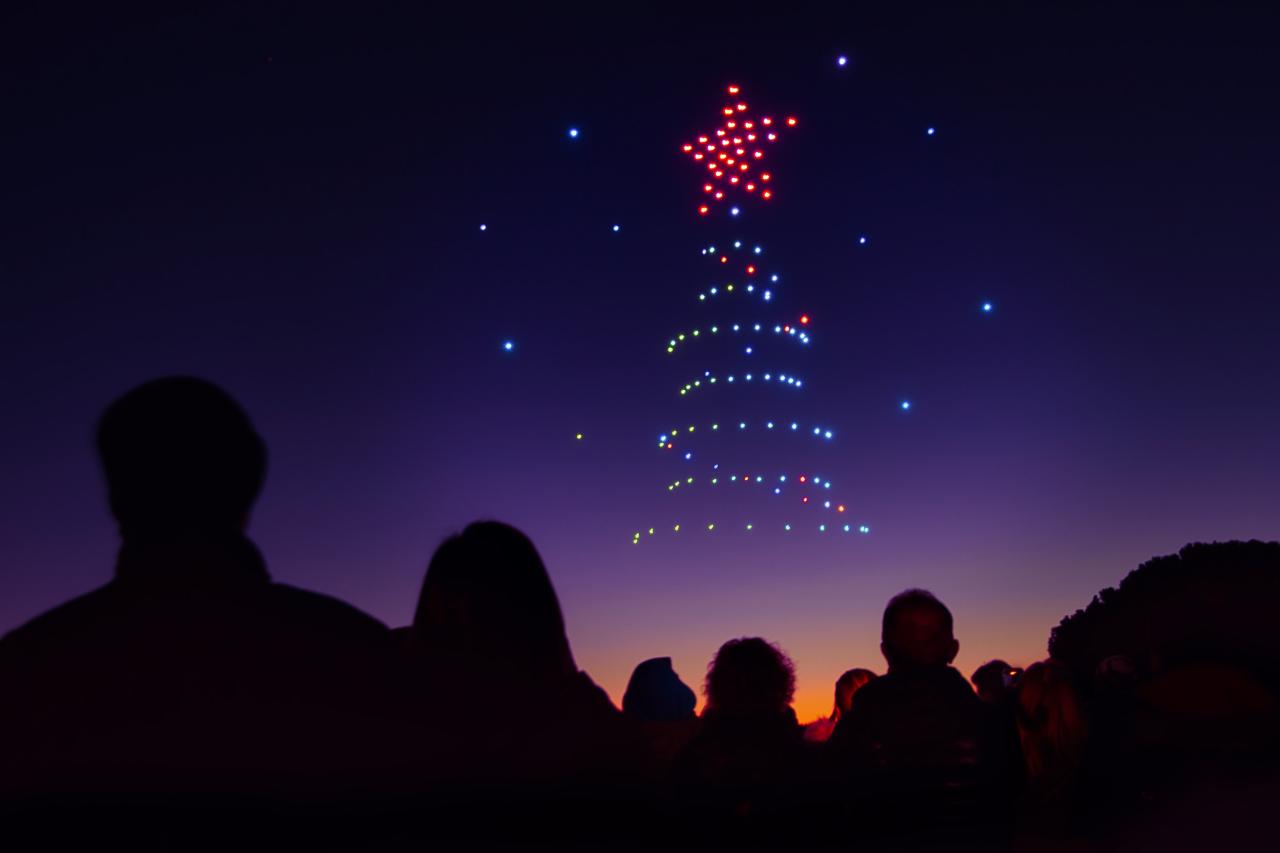Florida drone accidents represent a growing concern, demanding a comprehensive understanding of their causes, consequences, and preventative measures. This analysis delves into the various types of accidents, exploring their frequency, severity, and underlying factors. We will examine the legal framework surrounding drone operation in Florida, including liability issues and the role of insurance. Furthermore, we will assess the environmental and economic impacts of these accidents, alongside public perception and media coverage.
This in-depth examination aims to provide a clear picture of the current situation, highlighting both the risks and the potential for improved safety through technological advancements, enhanced regulations, and improved pilot training. By understanding the complexities of Florida drone accidents, we can work towards a safer future for both drone operators and the public.
Types of Florida Drone Accidents
Drone accidents in Florida, like elsewhere, vary significantly in their nature and severity. Understanding these variations is crucial for implementing effective safety measures and mitigating potential risks. This section categorizes Florida drone accidents based on their causes, severity, and typical circumstances.
Common Causes of Drone Accidents in Florida
Several factors contribute to drone accidents in Florida’s diverse environment. These include pilot error (such as loss of control due to inexperience or distraction), mechanical malfunctions (battery failure, motor issues), adverse weather conditions (strong winds, rain, lightning), and collisions with obstacles (buildings, trees, power lines). The unique geographic features of Florida, such as its extensive coastline and numerous waterways, introduce additional hazards, including water landings and proximity to wildlife.
Recent news reports of a Florida drone accident highlight the inherent risks associated with unmanned aerial vehicles. However, the increasing popularity of drone technology is also evident in spectacular events like the Florida drone show , which showcases the potential for safe and breathtaking displays. Understanding both the potential dangers and the exciting possibilities is crucial for responsible drone operation in Florida.
Severity Categorization of Florida Drone Accidents
Florida drone accidents can be categorized based on their severity. These range from minor incidents involving only property damage (e.g., a drone crashing into a fence) to more serious incidents resulting in injuries (e.g., a drone propeller striking a person) or fatalities (e.g., a drone falling from a significant height and impacting a person). The severity dictates the legal and economic consequences.
Frequency Comparison of Drone Accident Types
While precise data on the frequency of specific drone accident types in Florida is limited due to underreporting, anecdotal evidence suggests that collisions with obstacles and pilot error are among the most common causes of accidents. Accidents involving loss of signal or battery failure are also relatively frequent. Fatalities, thankfully, remain statistically rare.
Typical Circumstances Surrounding Each Accident Category

Accidents involving property damage often occur in populated areas where drones are flown close to structures or other obstacles. Injury accidents frequently involve recreational drone use, where safety protocols might be less rigorously adhered to. Fatalities are often associated with larger, heavier drones operating at higher altitudes or involving unforeseen mechanical failures.
Legal and Regulatory Aspects of Florida Drone Accidents
Navigating the legal landscape surrounding Florida drone accidents requires understanding both federal and state regulations, as well as the legal liabilities involved. This section explores these crucial aspects.
Florida’s Drone Regulations and Their Impact on Accident Rates

Florida’s drone regulations largely align with Federal Aviation Administration (FAA) rules. These regulations mandate drone registration, pilot certification for certain operations, and restrictions on flight altitudes and locations. While these regulations aim to reduce accidents, enforcement challenges and a lack of widespread awareness can limit their effectiveness.
Legal Liabilities in Florida Drone Accidents
Liability in Florida drone accidents depends on the cause of the accident and the involved parties. Drone operators are generally held responsible for damages caused by their drones, unless they can demonstrate that the accident resulted from a manufacturer defect or other unforeseen circumstances beyond their control. Third-party liability insurance is often recommended to cover potential damages.
Legal Precedents Set by Florida Drone Accident Cases
While specific case law concerning Florida drone accidents is still developing, existing legal precedents involving negligence and product liability are relevant. Court decisions in similar cases involving unmanned aerial vehicles (UAVs) in other jurisdictions provide guidance on potential legal outcomes in Florida. These precedents emphasize the importance of safe operating practices and adequate insurance.
Role of Insurance in Mitigating Drone Accident Consequences
Drone insurance plays a critical role in mitigating the financial consequences of accidents. Policies can cover property damage, bodily injury, and legal fees. Choosing an appropriate policy is essential, considering the type of drone operation, its value, and potential risks involved. The lack of insurance can significantly increase the financial burden on the drone operator in the event of an accident.
Safety Measures and Prevention of Florida Drone Accidents
Proactive safety measures are essential for preventing drone accidents. This section Artikels a comprehensive approach encompassing checklists, best practices, technological advancements, and training.
Comprehensive Safety Checklist for Operating Drones in Florida
Before each flight, a thorough checklist should be followed. This includes verifying the drone’s functionality, checking weather conditions, identifying potential hazards, confirming airspace restrictions, and ensuring the battery is fully charged. The checklist should also include a pre-flight inspection of the drone itself.
- Inspect drone for damage
- Check battery levels
- Verify GPS signal
- Review flight plan
- Check weather conditions
- Confirm airspace restrictions
Best Practices for Preventing Drone Accidents in Various Environments
Best practices vary depending on the environment. In urban areas, maintaining a safe distance from buildings and people is crucial. Near coastlines, awareness of wind conditions and potential water landings is vital. In rural areas, attention should be paid to wildlife and potential collisions with trees or power lines.
Technological Advancements Aimed at Improving Drone Safety
Technological advancements, such as obstacle avoidance systems, GPS-based geofencing, and automatic return-to-home features, significantly enhance drone safety. These technologies reduce the likelihood of collisions and loss of control, contributing to a safer operating environment.
Impact of Proper Training and Certification on Accident Risk Reduction
Proper training and certification are crucial for reducing accident risk. Certified pilots are more likely to understand safety regulations, handle emergencies effectively, and make informed decisions during flight operations. The FAA’s Part 107 certification program provides a framework for responsible drone operation.
Impact on the Environment and Wildlife
Drone accidents can have significant environmental consequences in Florida’s sensitive ecosystems. Understanding these impacts is crucial for responsible drone operation.
Potential Environmental Consequences of Drone Accidents in Florida’s Ecosystems
Drone crashes can lead to habitat disruption, pollution from battery acid or other materials, and damage to sensitive plant life. Accidents in coastal areas can also introduce debris into waterways.
Impact of Drone Accidents on Florida’s Wildlife
Collisions with drones can injure or kill wildlife, particularly birds and other animals. Noise pollution from drones can also disturb wildlife behavior and breeding patterns. The chemical components of batteries can also poison wildlife upon leakage.
Types of Environmental Damage Caused by Drone Accidents

| Type of Damage | Description | Example | Severity |
|---|---|---|---|
| Habitat Disruption | Damage to vegetation and nesting sites | Drone crashing into a bird’s nest | Medium to High |
| Pollution | Leakage of battery acid or other materials | Battery acid contaminating soil or water | High |
| Wildlife Injury/Mortality | Direct impact causing injury or death | Drone striking a bird in flight | High |
| Water Contamination | Drone falling into a waterway | Drone components polluting a river | Medium |
Comparison of Environmental Impact with Other Accident Types
While drone accidents pose environmental risks, their overall impact is currently relatively small compared to accidents involving larger vehicles or industrial spills. However, as drone use increases, the potential for cumulative environmental damage also grows.
Economic Consequences of Florida Drone Accidents
Florida drone accidents have economic consequences, impacting various sectors. This section explores these costs and their implications.
Economic Costs Associated with Florida Drone Accidents

Economic costs include property damage repair, medical expenses related to injuries, legal fees, loss of business revenue, and environmental cleanup costs. The overall cost varies significantly depending on the severity of the accident.
Examples of Economic Losses Resulting from Drone Accidents
Examples include damage to infrastructure (e.g., a drone crashing into a power line causing a blackout), lost tourism revenue (e.g., a drone accident disrupting a popular tourist attraction), and damage to agricultural crops (e.g., a drone damaging a field of produce).
Economic Impact on Various Sectors
The economic impact extends across several sectors, including tourism, agriculture, infrastructure, and insurance. Accidents can disrupt operations, lead to lost productivity, and increase insurance premiums.
Comparison of Economic Impact with Economic Benefits of Drone Technology
While drone accidents represent economic losses, the overall economic benefits of drone technology in Florida (e.g., in agriculture, infrastructure inspection, and search and rescue) are significantly greater. Focusing on safety and risk mitigation helps ensure the continued economic benefits of drone technology outweigh the costs of accidents.
Public Perception and Media Coverage of Florida Drone Accidents
Media portrayal of drone accidents significantly shapes public perception of drone safety and influences policy decisions.
Recent news reports detail a concerning Florida drone accident, highlighting the increasing need for responsible drone operation. The incident underscores the importance of safety regulations, a stark contrast to the lighthearted nature of tracking Santa, whose location you can find via the norad santa tracker phone number. Ultimately, the Florida drone accident serves as a reminder that even seemingly simple technology requires careful handling to prevent mishaps.
Portrayal of Drone Accidents in Florida’s Media
Media coverage of drone accidents in Florida tends to focus on the sensational aspects of incidents, often emphasizing the potential risks without adequately highlighting safety measures and responsible operation. This can lead to a skewed perception of the overall safety record of drones.
Influence of Media Coverage on Public Perception of Drone Safety
Negative media coverage can create fear and uncertainty about drone safety, potentially leading to public opposition to drone use. Balanced reporting, highlighting both the risks and benefits of drone technology, is essential for fostering a more informed public perception.
Timeline of Significant Florida Drone Accidents and Their Media Coverage
Creating a comprehensive timeline requires access to a database of reported drone accidents in Florida, which is not readily available publicly. However, significant accidents often receive local and sometimes national news coverage, highlighting the severity of the event and its aftermath. The media’s focus is often on the unusual or dramatic aspects of the event.
Impact of Public Perception on Drone Regulations and Adoption
Public perception directly influences policy decisions regarding drone regulations. Negative public sentiment can lead to stricter regulations, potentially hindering the growth of the drone industry. Conversely, positive perceptions can encourage wider adoption and innovation.
Recent Florida drone accidents highlight the inherent risks in unmanned aerial vehicle operation. These incidents underscore the need for robust safety protocols, a point further emphasized by the unfortunate orlando drone show malfunction , which showcased the potential for large-scale failures. Understanding the causes of both the Florida incidents and the Orlando malfunction is crucial for preventing future mishaps and ensuring responsible drone usage.
Future Trends and Predictions Regarding Florida Drone Accidents
Predicting future trends requires considering technological advancements, regulatory changes, and evolving societal attitudes toward drone technology.
Potential Future Trends in Florida Drone Accidents
As drone technology advances, the types of accidents may shift. For instance, increased autonomy could lead to a reduction in pilot error accidents, but it may also introduce new risks associated with software malfunctions or cybersecurity vulnerabilities.
Impact of Technological Advancements on Accident Rates
Technological advancements, such as improved obstacle avoidance systems and enhanced communication technologies, are likely to reduce accident rates. However, the rapid pace of innovation also introduces new potential points of failure that need to be addressed proactively.
Potential Changes in Regulations and Their Effect on Future Accidents
Future regulatory changes may involve stricter certification requirements, expanded airspace restrictions, and more robust enforcement mechanisms. These changes could significantly impact accident rates, but their effectiveness depends on the level of compliance and enforcement.
Strategies to Mitigate Future Risks Associated with Drone Operation in Florida
Strategies for risk mitigation include promoting comprehensive drone safety training, enhancing public awareness campaigns, developing improved safety technologies, and fostering collaboration between drone operators, regulators, and stakeholders. A multi-faceted approach is essential for effectively managing the risks associated with drone operation in Florida.
In conclusion, the increasing prevalence of drones in Florida necessitates a proactive approach to safety and regulation. While drone technology offers significant benefits across various sectors, the potential for accidents and their associated costs – economic, environmental, and human – cannot be ignored. By implementing comprehensive safety protocols, strengthening regulations, and fostering a culture of responsible drone operation, Florida can harness the advantages of drone technology while mitigating its risks.
Continued research, technological innovation, and public awareness campaigns are crucial for achieving a safer coexistence between drones and the Florida environment.
FAQ Insights
What are the most common causes of Florida drone accidents?
Pilot error, mechanical malfunctions, and adverse weather conditions are frequently cited causes.
What kind of insurance is needed to operate a drone in Florida?
Liability insurance is strongly recommended, and specific requirements may depend on the drone’s use and weight.
Are there specific airspace restrictions for drones in Florida?
Yes, restrictions exist around airports, military installations, and other sensitive areas. Consult the FAA website for detailed information.
What penalties can I face for violating Florida drone regulations?
Penalties can range from fines to legal action, depending on the severity of the violation.
